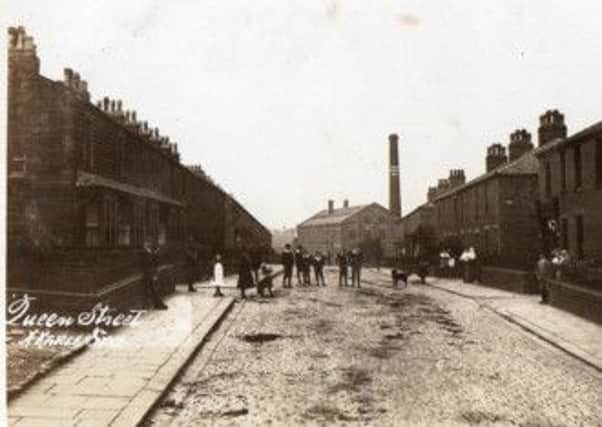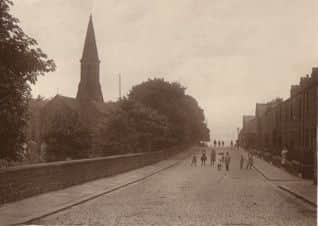Queen Street Mill awarded Grade I listing


This means the 1894 cotton weaving shed has joined Towneley Hall, Gawthorpe Hall and Shuttleworth Hall, in Hapton, as only Burnley’s fourth Grade I listed building.
Queen Street Mill is the last surviving steam-powered cotton weaving shed in the world and, more than that, although there have been alterations in the last 30 years or so, most of the machinery in the building was ordered for use there while it was under construction.
Advertisement
Hide AdAdvertisement
Hide AdMost of the Lancashire looms were made by the Burnley firms of Pemberton Brothers and Harling and Todd, though there is weaving machinery by other makers, some from Burnley but others from further afield.


Perhaps the most significant of these is the tapestry loom made by Hattersley’s, of Keighley, which is not yet back in production but which is capable of the most beautiful work.
The original mill engine survives. It was made by the Nelson firm of Roberts and Co and was renamed “Peace” in recognition of signing of the Treaty of Versailles which brought an end to the First World War on June 29th, 1919.
The story of the Queen Street Manufacturing Company, the name of the firm which ran the mill until 1982, is a remarkable one.
Advertisement
Hide AdAdvertisement
Hide AdThe company was not set up by an individual capitalist, as was the case with many similar firms, 4,000 shares, of £5 each were made available and sold to interested parties.
The shares were fully subscribed giving a total capital of £20,000 and those who bought them ranged from fairly wealthy people to weavers who, when the mill was built and the machinery installed, secured a number of looms on which to work.
The system has been termed “the Co-operative principle” but, in reality, this is not an accurate description. Co-operation, with a capital C, infers socialist connections but this was not the case at Queen Street Mill. It was more a large group of small capitalists pooling their meagre resources so something larger than any of them, individually, could be brought into being.
In Briercliffe there was co-operation but it was between small masters, often men who had learned their trade at the handloom.
Advertisement
Hide AdAdvertisement
Hide AdThe coming of limited liability in 1855 made it possible for firms to be set up in which only capital invested in the firm was at risk.
Hitherto, if a commercial enterprise became bankrupt, all of the assets of individuals who had invested in the firm were liable to be taken from them to pay off those who were in debt to the firm. The 1855 Act made it much more attractive to invest in, for example, a manufacturing company, because of the adoption of “limited” liability.
In 1856, a number of former handloom weavers, mainly from Haggate, set up the Haggate Joint Stock Commercial Company.
At a meeting, in the Hare and Hounds Inn in Haggate, about a dozen men, almost all of them connected with the dying handloom weaving industry, collected from among themselves, the sum of 16 shillings (80p).
Advertisement
Hide AdAdvertisement
Hide AdThis was the first capital raised for the company the weavers envisaged setting up on a flat piece of land, a few hundred yards from their homes, through which a small stream passed.
Up till then, the stream, known as the Harlesike, had been something of a problem for the community in Haggate. At times of heavy rain, the little stream burst its banks and tore up the surface of what is now Burnley Road in the village of Harle Syke. In those days the road, little better than a farm track, was known as Mire Lane, giving some idea of the desperate condition to which sustained rainfall could reduce the surface of the road.
The weavers had no intention of coming down from their lofty township and join Burnley’s new cotton entrepreneurs. The latter, similarly, appeared to have little interest in Briercliffe but the group of handloom weavers, who met at the Hare and Hounds, wanted to set up their own steam-powered cotton mill in Briercliffe where they, and their children, could be provided with work.
No longer would they be dependent on some capitalist for their wages. I suppose the Briercliffe answer to capitalism was “if you can’t beat them, change the rules a bit and join them”!
Advertisement
Hide AdAdvertisement
Hide AdThere were already two steam-powered cotton mills in the township. The mill at Roggerham, founded as a corn mill before 1600, was the older but its steam engine dated only from c1846 by which time the mill had passed from processing corn, through wool to spinning cotton. The other mill was the Hill End Mill, Lane Bottom. It was a cotton weaving shed, was newly built and, like Roggerham, was in private ownership.
In Briercliffe terms, what was going to be new about the intended Harle Syke Mill was that it was going to be possible for working men, to use Marxist terminology, to take control of a small part of the “means of production” while, at the same time, join the ranks of the small capitalists.
All this could have fallen apart but, remarkably it did not do so. What happened was that the new mill was operating at its roadside site in Harle Syke by 1856 where there were 300 looms, most of them made by the Burnley firm of Wilkinson’s.
Within a short space of time the Cotton Famine hit the Burnley cotton trade and the new Haggate Joint Stock Company almost went under. It was saved by some Briercliffe ingenuity when it was suggested that, rather than close the mill, which was certainly an alternative, a better solution might be to divide the looms up among the shareholders. They would then be able to set up their own small companies, employ whom they wanted, pay the wages they could afford and deal directly at the Manchester Exchange.
Advertisement
Hide AdAdvertisement
Hide AdFrom these shaky foundations the small weaving companies in the mill prospered. There were a number of amalgamations, larger firms were formed and it was not long before the sons of the Haggate handloom weavers were opening up other mills in the village and in Burnley.
The first of these was the Briercliffe Mill of 1880 and this was followed by the Queen Street Mill of 1894. Later, Walshaw Mill was built on similar principles and, in 1905, the workers at Hill End Mill in Lane Bottom bought the mill when it was put up for sale and ran it in a similar manner. A year earlier the families involved in the original project had extended their mill and opened up the large “Siberia” weaving shed.
Queen Street Mill was, therefore, just one of a number of local mills which were capitalized in the peculiar way described.
Without going into a full history of the firm, it is known that it operated profitably for most of the years to 1982 and that, at one time, had over 1,500 looms mostly making bleachers, shirtings and printers which were exported throughout the world.
Advertisement
Hide AdAdvertisement
Hide AdThe company survived longer than most not by adapting to the new technology of the automatic loom. Superficially, the automatic loom had a lot going for it but its usefulness depended on volume. The automatic loom could not compete with the Lancashire loom on small runs and it was this business that the firm looked for in its later years. The weavers who worked there were very skilled and adaptable and could cope with the orders the salesmen won.
However, in 1982, the company decided enough was enough. They still had the weavers but the workforce was getting older and, understandably, as they had seen all but one of the mills in Harle Syke close, the younger residents of Briercliffe saw little future in textiles.
Burnley Council stepped in and, with support of the Hebden Bridge based Pennine Heritage Trust, purchased the premises and machinery. An attempt was made to support an industrial museum by setting up craft workshops in a part of the weaving shed that was partitioned off from the museum.
In fact the mill was divided into three areas. Only the middle third retained its looms but about 300 Burnley made power looms were reprieved and these are the basis for the present museum which has just been awarded Grade I status.
Advertisement
Hide AdAdvertisement
Hide AdToday, Queen Street Mill Museum of Cotton Manufacturing, or even better the Briercliffe (or Burnley) Museum of Cotton Manufacturing, as it might be called, is run by a partnership consisting of Lancashire County Council and Burnley Council. The latter contributes an inflation-related sum each year to Lancashire Museums Service which runs the facility for the benefit of us all.
There is, though, a dark cloud on the near horizon and that is that Calico, the housing association, has been given planning permission to build on the adjacent site which was formerly occupied by Primrose Mill.
It is my view that the houses to be built are not appropriate for a site so close to a Grade I Listing. In fact, I contended, in a recent Development Control Committee meeting, in Burnley Town Hall, that the houses to be built here are not even acceptable given the previous status of the site.
At that meeting I lost the vote. In fact, as a local newspaper commented at the time, when the vote took place it was only Opposition members who voted against the application submitted by Calico. Officers of the council recommended the application for approval, but did they know Grade I Listed status was in the pipeline? I do not recall seeing it in their report?
Advertisement
Hide AdAdvertisement
Hide AdIt must be remembered Queen Street Mill itself already had some degree of protection.
The building and development site are close to Briercliffe Parish Church, which is listed Grade II, and the whole of this part of the village is within Harle Syke Conservation Area.
Yet planning permission was granted for a clearly inappropriate development of 60 houses adjacent to what English Heritage has termed an “unparalleled” survivor which “merits listing of the highest grade”.
The Heritage Secretary, Mr Ed Vaisey, has commented that Queen Street Mill is the “epitome of a time when cotton production in Lancashire was Britain’s principal source of industrial wealth”.
Is this to be lost to an inappropriate development?
Advertisement
Hide AdAdvertisement
Hide AdI expect Burnley Civic Trust and the Briercliffe Society will have something to say about, not only the process by which planning permission was granted, but about the new status of Queen Street Mill and who was aware of its impending status.